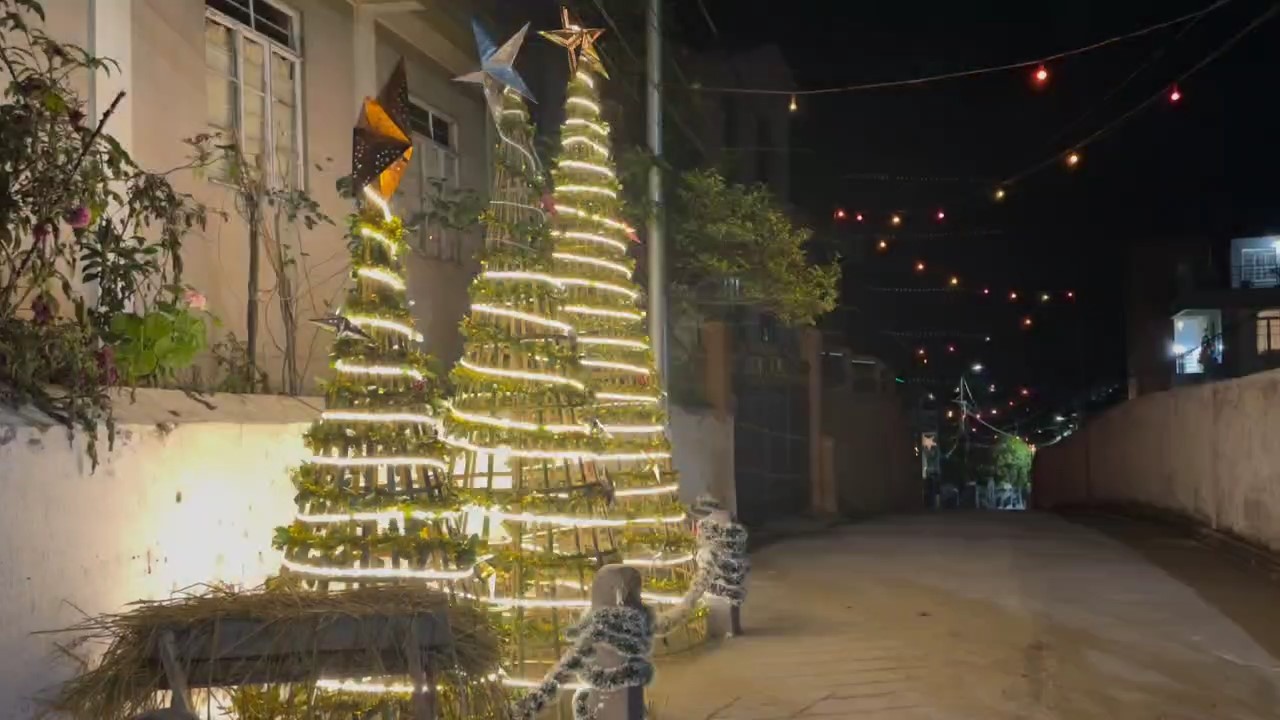
The flip side of the three figures is reflective of the story of Christmas.
It is Christmas time in Meghalaya, a Christian majority state, as streets, homes and villages have been decked up with Christmas decorations ahead of the festive celebrations.
In one of Shillong’s oldest localities in Jaiaw under Jaiaw Laitdom Dorbar, traditional tribal three cone figures stand tall. One look at what has now become the art installation representing Khasi traditional crafts, can connect the beholder with the past, intersecting in the present with efforts to embrace the future.
The three figures that look like Christmas trees with lights, were actually crafted from bamboo culms by skilled craftsmen of Nongtariang village in Ri-Bhoi district of Meghalaya. The three cones between 7 and 12 feet tall seem to represent the Christmas nativity story of old where the baby, the mother and the father were present in a manger.
The Christmas art installation also seems to represent the completion of the community cleaning drive before the festive season, a local practice to draw the community together in cleaning the neighborhood. By practice, after the cleaning drive, traditional Khasi baskets called “Khoh” are placed upside down, in a way sending a message that the cleaning of the village is done and public hygiene is the mainstay.
The open-endedness of the installation is artsy and organic enough to give space to even the critics, as if the artist-figure is standing at the door and knock gracefully.
The flip side of the three figures is reflective of the story of Christmas, where the three wise men from the east traveled from afar to reach the place where baby Jesus was born, in present day Israel. It was there, next to the manger that the three wise men knelt down and offered gifts of gold, frankincense and myrrh.
The local youth turned the spot into a natural selfie point where thousands of passers-by stopped to click a picture with their mobile phones. If culture and religious festivity should meet, if indigenous practices and artistic expression should bump into each other and if inclusivity of faiths and traditional heritage should brush shoulders, the three cone figures is one natural example, as if wishing the passers-by ‘Merry Christmas’.



